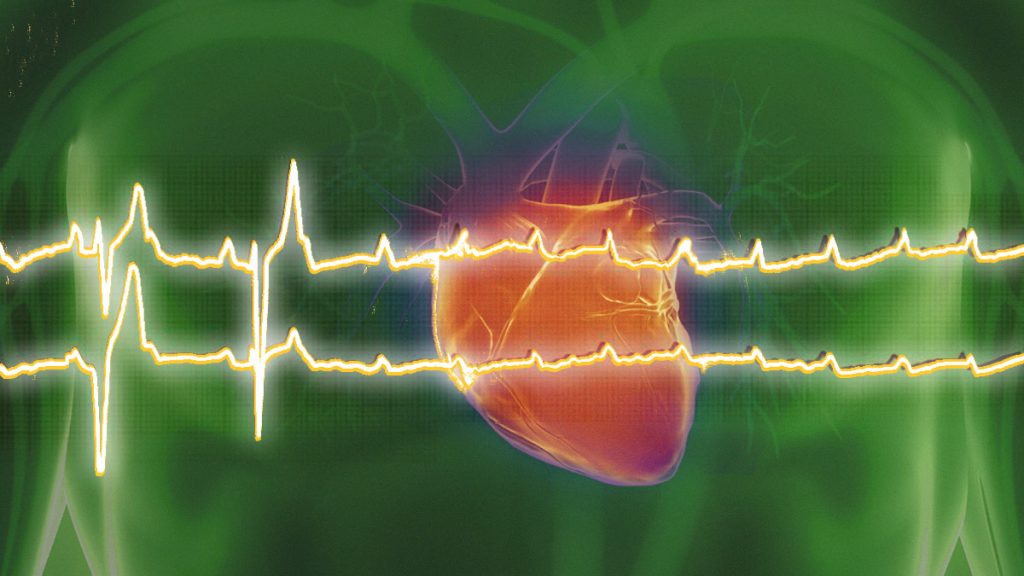

If a person has a high heart rate at rest and is experiencing other symptoms, doctors may need to examine his or her heart function, Bauman said. On the other end of the spectrum, a consistently high heart rate can put too much stress on the heart and other organs.

Related: Top 10 amazing facts about your heart For example, bradycardia is a condition where the heart rate falls too low, typically under 60 bpm this can be the result of problems with the sinoatrial node, which acts as the heart's pacemaker, or damage to the heart as a result of a heart attack or cardiovascular disease. " A low heart rate in somebody who is having dizziness and lightheadedness may indicate that they have an abnormality that needs to be looked at," Bauman said. That said, if it's coupled with worrisome symptoms, a low heart rate may signal a problem. "Many medications people take - especially medication for blood pressure, such as the beta blockers - will lower your heart rate," Bauman said. One's resting heart rate can also dip below 60 bpm as a result of taking certain medications. Athletes and people who are very fit can have resting heart rates of 40 bpm or lower. Active people often have lower heart rates because their heart muscles don't need to work as hard to maintain a steady beat. For children ages 6 to 15, the normal resting heart rate is between 70 and 100 bpm, according to the AHA.īut having a heart rate lower than 60 bpm doesn’t necessarily mean you have a medical problem. It’s best to measure your resting heart rate in the morning before you get out of bed, according to the AHA.įor adults 18 and older, a normal resting heart rate is between 60 and 100 bpm, depending on the person’s physical condition and age. Your resting heart rate is the number of times your heart beats in a minute when you are calmly sitting or lying down. (Image credit: Jamie Grill via Getty) Resting heart rate You can also use one of the best budget fitness trackers (opens in new tab) to get a reading, but the accuracy on these devices varies. Note that using your thumb may be confusing because sometimes you can feel a pulse in the thumb, she said. You can also do this for 20 seconds and multiply by three, which may be easier, Bauman told Live Science. The easiest places to measure your heart rate, according to the AHA, are:įor an accurate reading of your pulse rate, put two fingers over one of the areas listed above and count the number of beats in 60 seconds. Heart rate goes up during strenuous activity, but a vigorous workout may only modestly increase blood pressure. There is no direct correlation between blood pressure and heart rate, so having high blood pressure, or hypertension, does not necessarily result in having a high pulse rate, and vice versa. You can measure your heart rate by taking your pulse, which reflects how often the arteries expand and contract in response to the heart beating, according to MedicalNewsToday (opens in new tab) heart rate and pulse rate are equal to each other, so the terms are often used interchangeably. Blood pressure is a measurement of the force of the blood against the walls of arteries, while heart rate is the number of times your heart beats per minute. Some people confuse high blood pressure with high heart rate. Learn about heart rate variability (opens in new tab) or read on to discover more about normal heart rates. For additional information visit Linking to and Using Content from MedlinePlus.Tracking your heart rate can help you monitor your fitness level, and it may help you spot developing health problems if you are experiencing an unusually fast, slow, or irregular heartbeat. Any duplication or distribution of the information contained herein is strictly prohibited without authorization. Links to other sites are provided for information only - they do not constitute endorsements of those other sites. A licensed physician should be consulted for diagnosis and treatment of any and all medical conditions. The information provided herein should not be used during any medical emergency or for the diagnosis or treatment of any medical condition. This site complies with the HONcode standard for trustworthy health information: verify here. Learn more about A.D.A.M.'s editorial policy editorial process and privacy policy. is among the first to achieve this important distinction for online health information and services. follows rigorous standards of quality and accountability. is accredited by URAC, for Health Content Provider (URAC's accreditation program is an independent audit to verify that A.D.A.M.


 0 kommentar(er)
0 kommentar(er)
